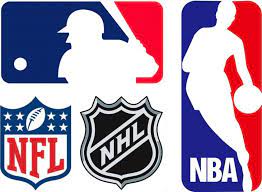What’s next for professional sports?

Football, basketball, and baseball are what most people think about when pondering the topic of sports, which seems logical as all of these mainstream sports have billion-dollar leagues that millions of people watch every year. However, despite all of the traditions around these popular sports, this wasn’t always the case. Just 70 years ago, football, which is the most-watched sport in America today, was barely an afterthought compared to sports like baseball. If these athletics are as cyclical as they seem, it begs the question, “what’s next?”
One of the largest growing communities is pickleball, with over 4.2 million players—both recreational and professional—in 2020 alone. The game combines aspects of tennis, badminton, and ping-pong, making it an innovative new way to exercise. Part of the mass appeal comes from the versatility of the sport, as it can be tailored for all ages. Many senior citizens are able to play the game at a calmer pace, while younger athletes can play fast-paced and aggressively. The one issue many people are facing is the high cost of courts. Pickleball courts, much like tennis courts, are relatively expensive and take up a decent amount of space. As the demand for the sport increases, so does the need for courts. This makes the sport much more difficult to implement as, at maximum, there are four players on a court, so it is not practical for all schools.
Another sport that is seeing a boom in participation is rugby. For many countries, such as England and South Africa, rugby is their version of football. It is an extremely competitive sport with many parallels to football. The biggest and most controversial difference is the lack of protection for its players. Rugby players wear a mouthguard, and that’s about all. No helmets or pads are used in the game, and full contact is expected. Despite this, many schools are adopting the idea of having a rugby team or possibly a club, so the school is less liable. Many athletes that play rugby favor it over football solely because it is much more active, and the ball is constantly moving. The physicality required also attracts many players, but this also makes it much more difficult to implement in schools.
The most surprising of these up-and-coming sports is Spikeball. Initially, it started as a yard game but has recently evolved into a more competitive sport. Roundnet invitational matches have gained so much popularity they have even been shown on ESPN. The appeal in both playing and watching this sport is its simplicity. The game is as simple as “spiking” a ball at a net and trying to get the opposing team to lose control of it. If you can’t bounce the ball off the net, you lose: it’s that simple. Even with its simplicity in rules, the actual playing of the game can be very competitive and exciting to watch. Spikeball professionals play the game at an extraordinarily fast pace that is never boring to watch. The game itself is relatively cheap, making it easy to obtain and play. The biggest downfall of the sport is the lack of a team atmosphere. The game is played with a partner, but there really is no way to have a whole team of individuals working together.
Sports like football, baseball, and basketball still run the sporting industry and will most likely continue to for a long time. However, new sports, especially individual and small team-based ones, are beginning to emerge as the next best things in the world of professional sports.

Ian Goodman is a senior at FHC and in his first year on staff. He plays football and runs track for the Rangers. Ian recently found his passion in lifting...


